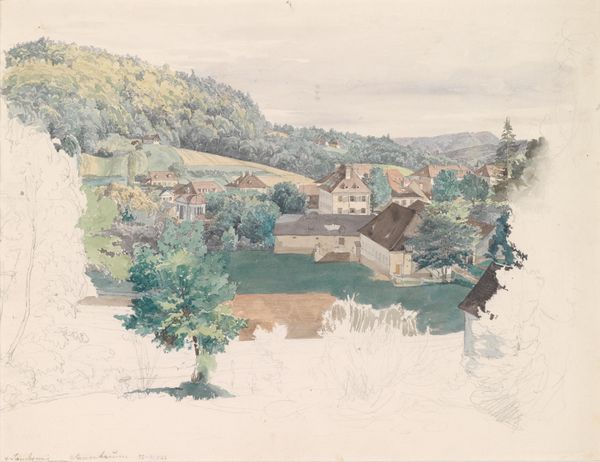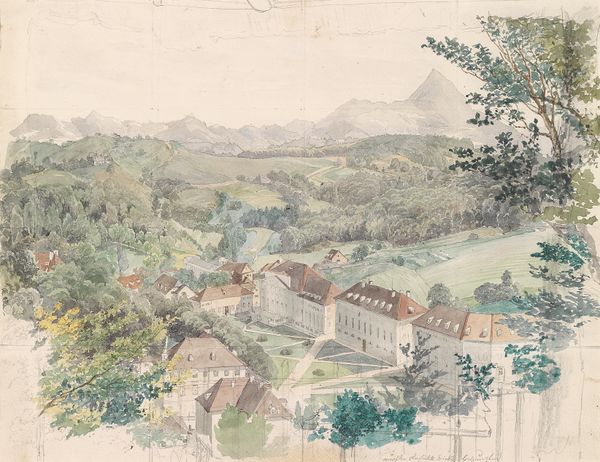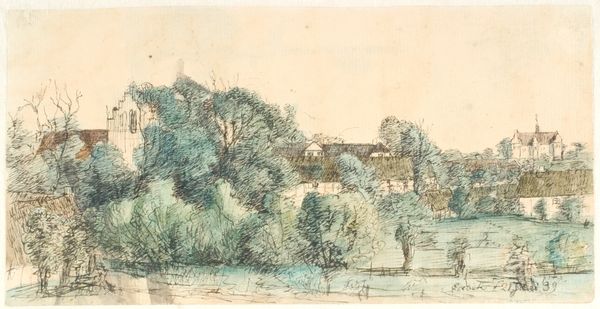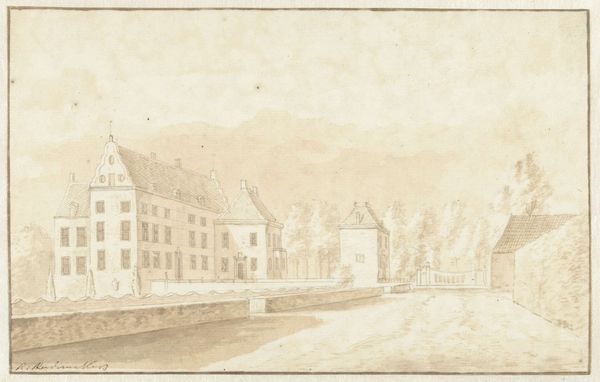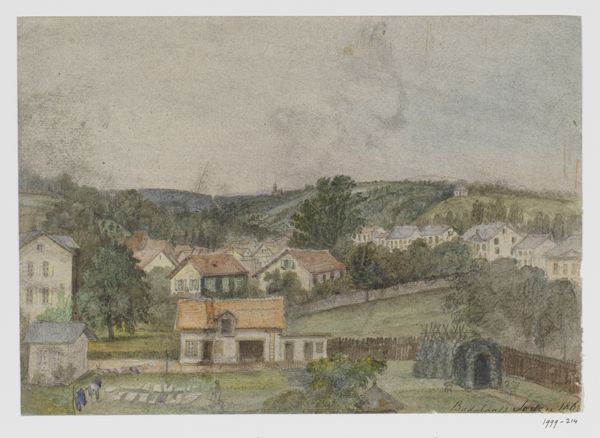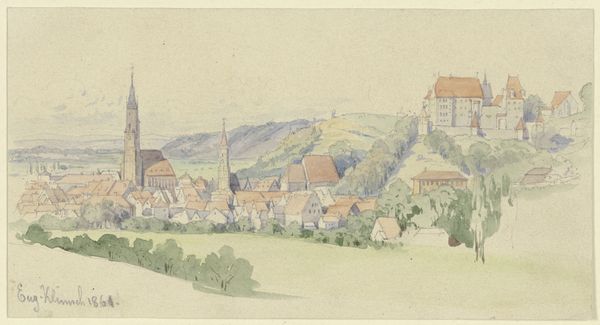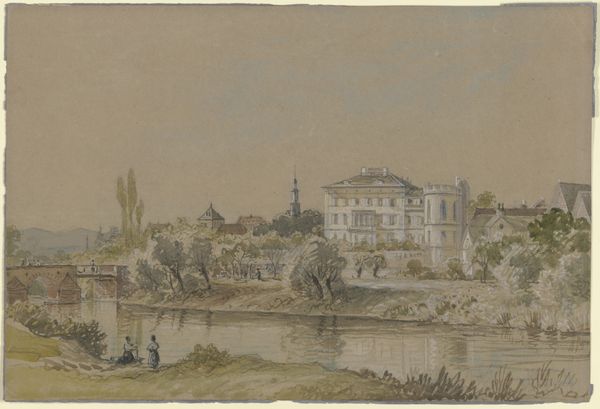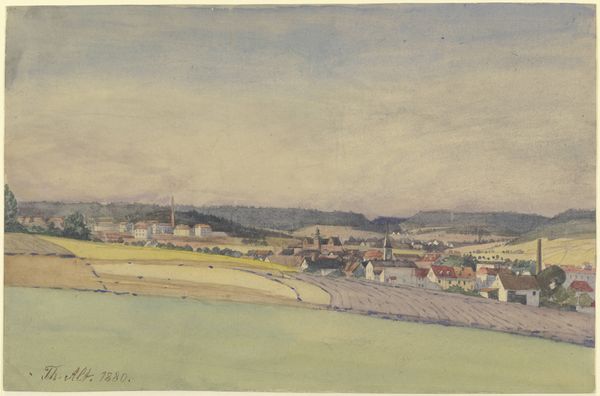
plein-air, watercolor
#
aged paper
#
light pencil work
#
quirky sketch
#
plein-air
#
sketch book
#
landscape
#
personal sketchbook
#
watercolor
#
sketchwork
#
romanticism
#
sketchbook drawing
#
cityscape
#
watercolour illustration
#
sketchbook art
#
watercolor
Dimensions: 33 x 26 cm
Copyright: Public domain
Editor: Here we have Johann Nepomuk Passini's "Ansicht Vom Kurplatz in Bad Rohitsch-Sauerbrunn" from 1848, rendered in watercolor. It gives such a wistful, ethereal impression. I am curious to learn what you see in this plein-air sketch. Curator: What I find compelling is its liminal quality, that sense of a moment caught between visibility and invisibility. Notice how the scene unfolds, partly defined, partly suggested. Do you see how the crisp architectural details contrast with the softer, less defined natural elements? Editor: I do! It's like two realities coexisting on the page. Curator: Precisely! It mirrors the period's broader Romanticist leanings and its exploration of emotional and spiritual states through landscape. Also, think of the 'Kurplatz', the health resort. What meanings or symbolism may such locations convey? Editor: Possibly hope, healing, escape from urban life... and societal gatherings? Curator: Absolutely! Now, considering this was created in 1848, a year of widespread revolution, does this placid, somewhat unfinished scene offer a contrast to that upheaval, or perhaps even a subtle commentary on it? Editor: It definitely feels removed, a little like a dream detached from reality. The incompletion adds to the sense of something unresolved, yet peaceful. Curator: I agree. The "unfinished" elements prompt consideration: Is it a symbol for an unrealized or idealized social project of taking care and gathering? Also consider how watercolors often evoke ephemerality and the passage of time. Editor: This really transforms my understanding; I initially saw a simple landscape, but now recognize those socio-historic allusions. Curator: Exactly. Now, we can appreciate it on multiple registers, noting how its symbols create continuity between lived experience and collective cultural memories.
Comments
No comments
Be the first to comment and join the conversation on the ultimate creative platform.
